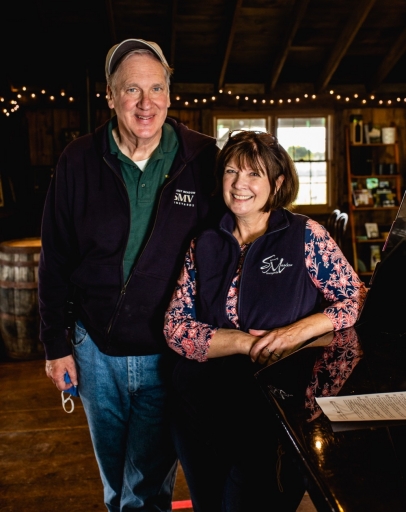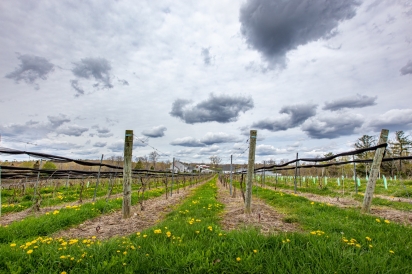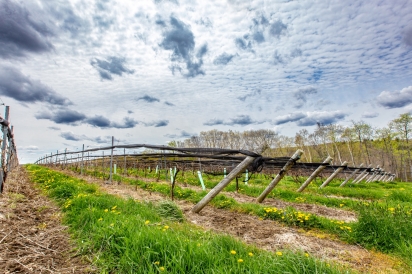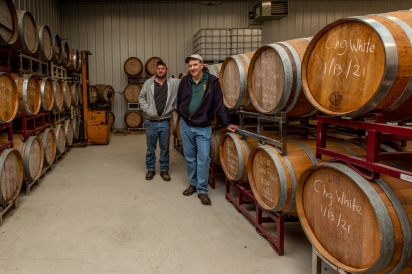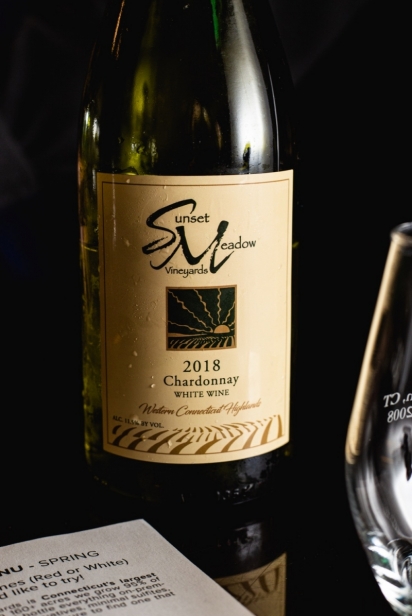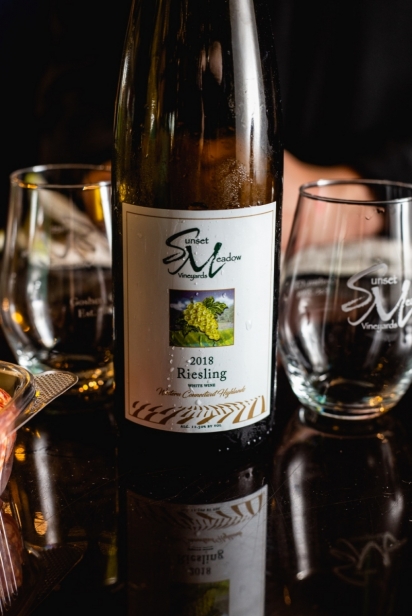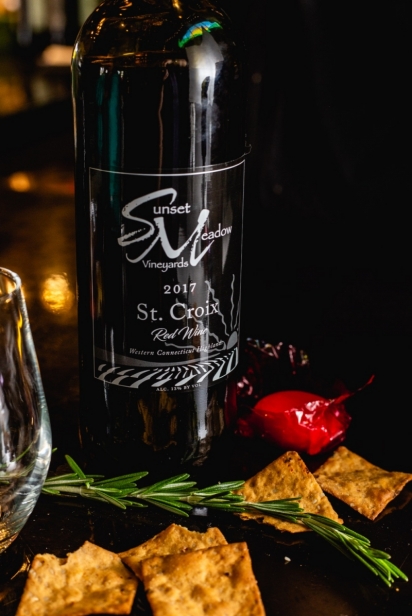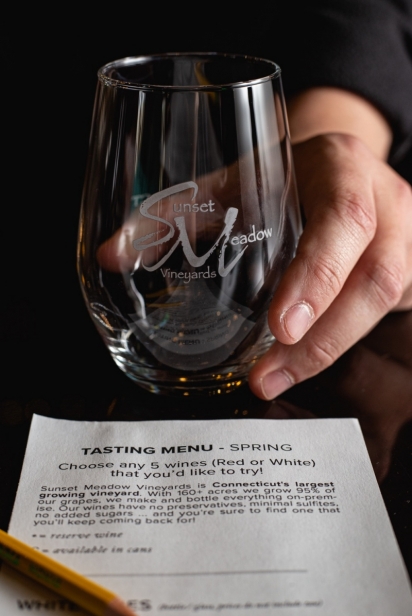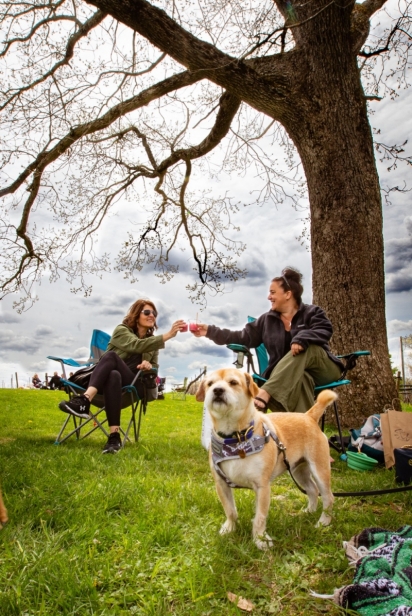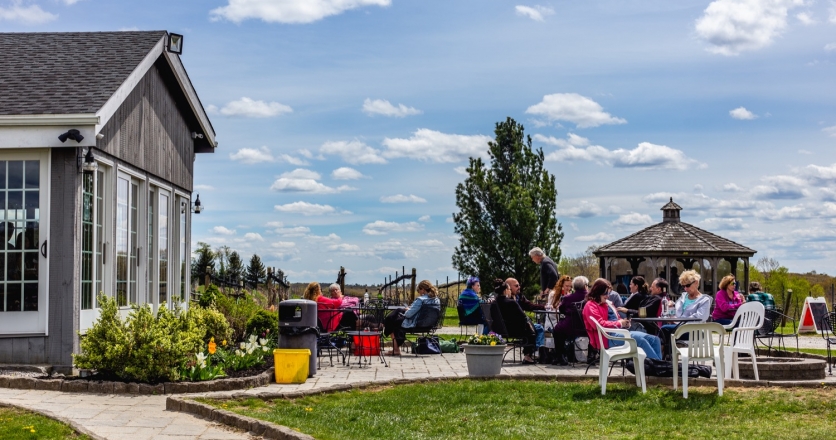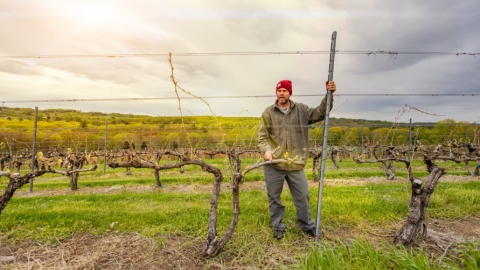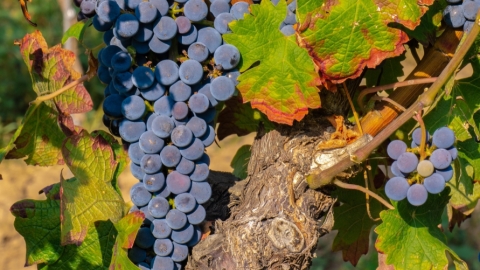Sunset Meadow Vineyards
On beautiful afternoons in late spring and summer, people flock to the grounds at Sunset Meadow in Goshen. Picnic baskets, blankets, wine, and cheese abound. One couple, setting up their picnic, recalls some of the phenomenal sunsets they’ve witnessed at the vineyard. Back in 1995, it was those same sunset views that caught the attention of George Motel, when he considered purchasing the property, rich with an agricultural history that dates to the 1800s. However, when trying to sell the idea to his wife, Judy, it took more than a magnificent sunset to convince her. With a growing family, it was the bales of hay for children to play on that helped win her over.
Twenty years on, Sunset Meadow Vineyards has become a staple along the Connecticut wine trail, having slowly transitioned from a cattle and hay farm to a vineyard and winery under the guidance of UC Davis certified viticulturist, oenologist, and owner George Motel. It may have initially come as a surprise to locals that the formerly named Sunset Meadow Farm had begun producing wine, but by 2008, with the completion of the vineyard’s new tasting room, that curiosity had been replaced by excitement. Today, Sunset Meadow grows 15 different varieties of grapes on the 170-acre property, including broadly popular varieties, like Chardonnay, Cabernet Franc, Merlot, and Riesling, as well as less well-known hybrids, such as St. Croix, Seyval Blanc, Vidal Blanc, and Cayuga White.
Apart from the vineyard’s central campus (where visitors sip and picnic) is their wine production and processing area, including a “crush pad,” where George and his son, George IV, talk about the process that brings their grapes from the vine to the bottle. Modern wine making rarely resembles the fanciful myth of barefooted field hands jumping into wooden barrels to stomp grapes into liquid. To the contrary, today’s grape harvesting and wine making machinery is as high tech as that found at any modern farm, brewery, or distillery, yet much of the more precise physical labor and quality control still relies on adept staff members, which created an unanticipated hurdle in 2020.
“It was tricky finding workers during the pandemic,” George, Sr. explains as his son demonstrates how their massive grape picker works. Although the machine radically cuts down picking time (what took eight or nine people several hours can now be done in minutes), “it’s still a two-person operation, with someone following behind to make sure grapes aren’t lost or that leaves don’t get tossed in with the fruit.” On top of that, there are numerous vines — the European varieties in particular — that must still be picked by hand. With an exceptionally short harvest period (roughly six weeks between September and October) in which to gather the entire acreage of grapes, many hands are needed to ensure a top-quality crop and product. Despite these hurdles, Sunset Meadow still managed to harvest 85 tons of grapes in 2020. That’s a lot of wine.
Harvesting, however, is only one part of a grape’s journey to fermented adulthood. Their often perilous youth begins on the vine. “This year's shoot will become next year’s fruit,” George Sr. says, as he points out different parts of the vine. Netting is rolled up at the top of some of the vines, set to be deployed in their defense. As the grapes blossom, color, and ripen, they become irresistible to migratory birds and local turkeys, as well as raccoons, whose deft paws are not always hampered by the netting.
However, hungry wildlife hasn’t slowed Sunset Meadow down. They’ve grown from their first sowing of 1,700 plants and now boast over 22,000 vines spread over 50 acres. Processing equipment has grown alongside, including a refrigerated barrel room that is more efficient, environmentally friendly, and keeps everything cool year-round, including the stainless steel tanks used for fermentation. One of their biggest moves, however, happened only late last year, when they opened a second tasting room in Sheffield, Massachusetts, bringing their wines to an entirely new audience.
Sunset Meadow produces blends (such as their Root 637 Dry, a Cabernet Sauvignon blend, and their New Dawn, another dry red composed of estate-grown grapes) and single varietals (like their estate-grown Chardonnay), as well as sweet, semi-sweet, and sparkling wines for every palette. In addition to their popular wines, they serve chocolate and wine pairings that feature confections from local chocolatiers, and they’ve recently collaborated with Litchfield Distillery, who supplied barrels with which Sunset Meadow has produced a St. Croix bourbon barrel-aged wine, a first of its kind.
With surrounding hills in full bloom, it is understandable for a visitor to Sunset Meadow to become captivated by the view on the horizon (as well as by what is in their glass), perhaps oblivious to the incredible amount of work that this family operation puts into each bottle — years upon years of loved labor that makes it seem like the sun is only just beginning to rise on Sunset Meadow Vineyards.
> Sunset Meadow Vineyards: 599 Old Middle St., Goshen; 860-201-4654


